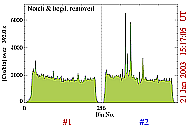
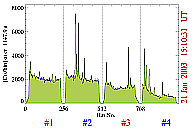
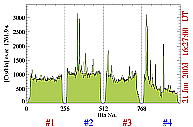
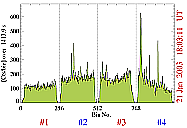
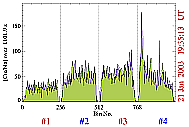
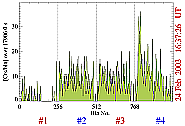
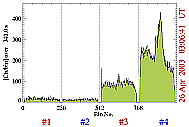
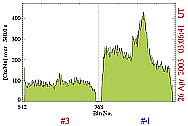
| Title: | Patterns
of X-ray Line Emission Variability as Observed by the RESIK Bragg
Spectrometer | |
| Authors: | J. SYLWESTER, B. SYLWESTER J.L. Culhane, G.A. Doschek, V.N. Oraevsky, K.J.H.Phillips | |
| Abstract: | RESIK is a unique
Bragg bent crystal spectrometer operating continuously since August 2001. By
now, it has collected ~ 10 GB of solar flare and
active region spectra in a very much unexplored spectral region between 3.2 Å and 6.1 Å. In this paper we present a number of representative
observations covering periods of various solar activity: from the most
active level (M+ flares) to exceptionally quiet corona. We present also a
tentative list of the spectral features observed. In the wavelength range
observed by RESIK there are a number of strong emission lines corresponding
to H- and He-like resonance transitions of Si, S, Ar and K ions. These lines
are formed by thermal plasma of temperature between 5 and 50 MK, and
therefore their analysis reveal the distribution of hot plasma over this
interval. RESIK sees lines from a number of different elements, so it is
possible to do abundance analyses. The elements concerned have a wide range
of first ionisation potentials (FIPs) so it has been possible to examine the
dependence of coronal or flare abundances on FIP. We have observed
substantial variations of the K/Ar line ratio, and respective line/continuum
ratios, which can be best explained by allowing for changes in the chemical
composition of the coronal plasma.
|
| FULL VERSION-HTML | ||||
| Get postscript (172Kb) | ||||
| Figures: |
 | |||
| Fig3.ps.gz |
 | |||
| Fig5.ps.gz |
 |
 | ||
| Fig7.ps.gz |
 |
 | ||
| Fig9.ps.gz |
 |
 | ||
Page created by Jaroslaw Bakala (
jb@cbk.pan.wroc.pl)
Web Curator: Janusz
Sylwester ( js@cbk.pan.wroc.pl)